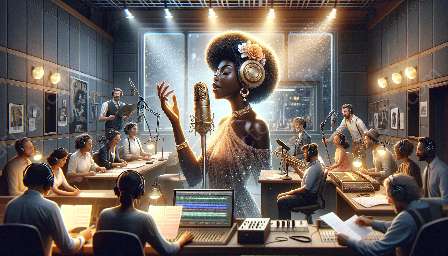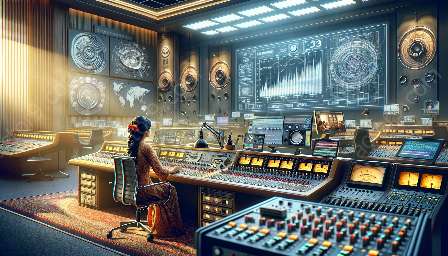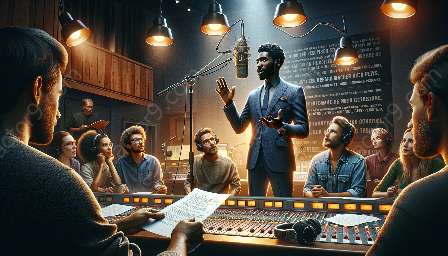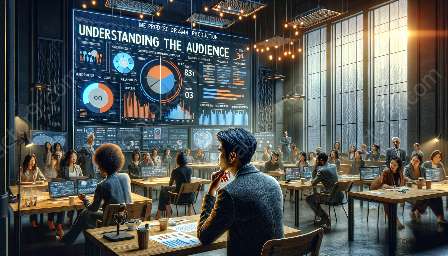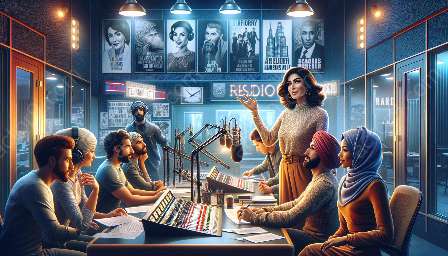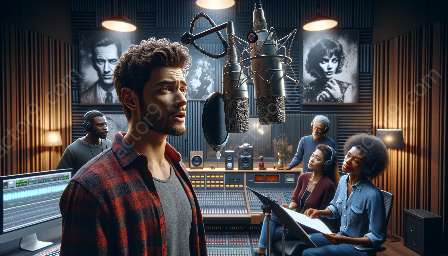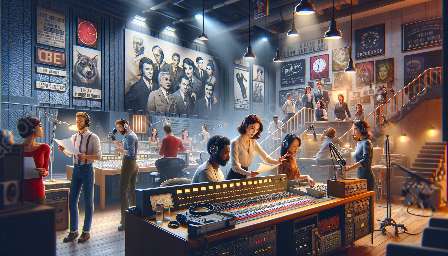Radio drama production stands as a timeless medium for storytelling, captivating audiences through its unique blend of sound and imagination. However, this form of entertainment is not isolated; it informs and interacts with various other media forms, creating a captivating narrative experience for the audience.
Understanding Audience in Radio Drama Production
At the heart of radio drama production lies the audience, whose engagement and emotional connection are essential. Understanding the audience involves not only knowing their interests and preferences but also leveraging the power of sound and storytelling to craft immersive experiences. By delving into the psyche of the listeners, radio drama producers can tailor their content to resonate deeply, establishing a bond that transcends the airwaves.
The Multifaceted Interaction with Other Media Forms
Rather than existing in opposition, radio drama production intertwines with various media forms, enriching the narrative landscape and expanding the audience's perception. This interplay is evident through the following mediums:
1. Literature
The connection between radio drama and literature is profound, with many radio dramas stemming from adapted literary works. By bringing classic and contemporary narratives to life through sound, radio drama production acts as a bridge between literature and audiences, offering a distinct interpretation of well-loved stories. This interaction extends the reach of literature, inviting listeners to immerse themselves in the world of words and emotions.
2. Film and Television
Radio drama production navigates a symbiotic relationship with film and television, offering a contrasting yet complementary storytelling experience. While visual media rely on imagery, radio drama leverages the power of sound to ignite the imagination. Through sound effects and voice acting, radio dramas carve a niche that enriches the storytelling tapestry, providing a compelling alternative to the visual-centric nature of film and television.
3. Podcasting
The emergence of podcasts has led to a renaissance for radio drama production, fostering a digital renaissance for the art form. Podcasting serves as a contemporary platform for radio dramas, enabling broader accessibility and audience engagement. This interaction opens avenues for experimentation and innovation, allowing radio drama producers to adapt to the evolving landscape of digital content consumption.
The Evolving Landscape of Radio Drama Production
As radio drama production continues to evolve, its interaction with other media forms undergoes dynamic shifts, giving rise to new possibilities and experiences. The integration of interactive storytelling, augmented reality, and transmedia narratives showcases the adaptability of radio drama, inviting audiences to embark on immersive journeys across multiple platforms.
Understanding Audience Engagement
The interweaving of radio drama production with other media forms underscores the importance of understanding audience engagement. By harnessing insights from diverse media landscapes, radio drama producers can tailor their content to captivate and resonate with the audience, ensuring that each narrative reverberates across various platforms, immersing listeners in unforgettable experiences.
Conclusion
Radio drama production serves as a captivating realm of storytelling, marked by its profound interaction with various media forms. Understanding its symbiotic relationship with literature, film, television, and podcasting provides insight into the intricate tapestry of storytelling. By understanding the audience in radio drama production and embracing the interconnectedness with other media forms, producers can unlock the potential for captivating narratives that transcend the limitations of any single medium, weaving intricate stories that resonate deeply with audiences.

